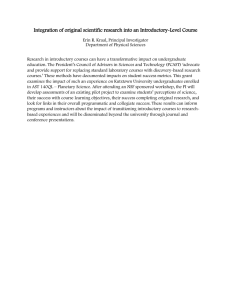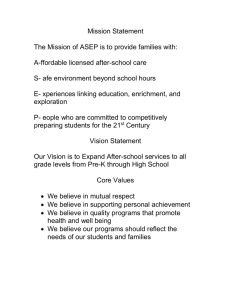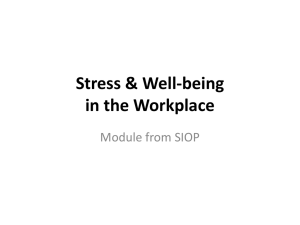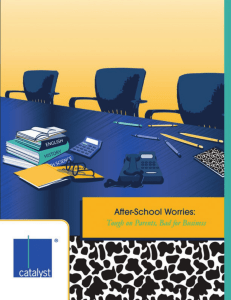Community, Families, and Work
advertisement
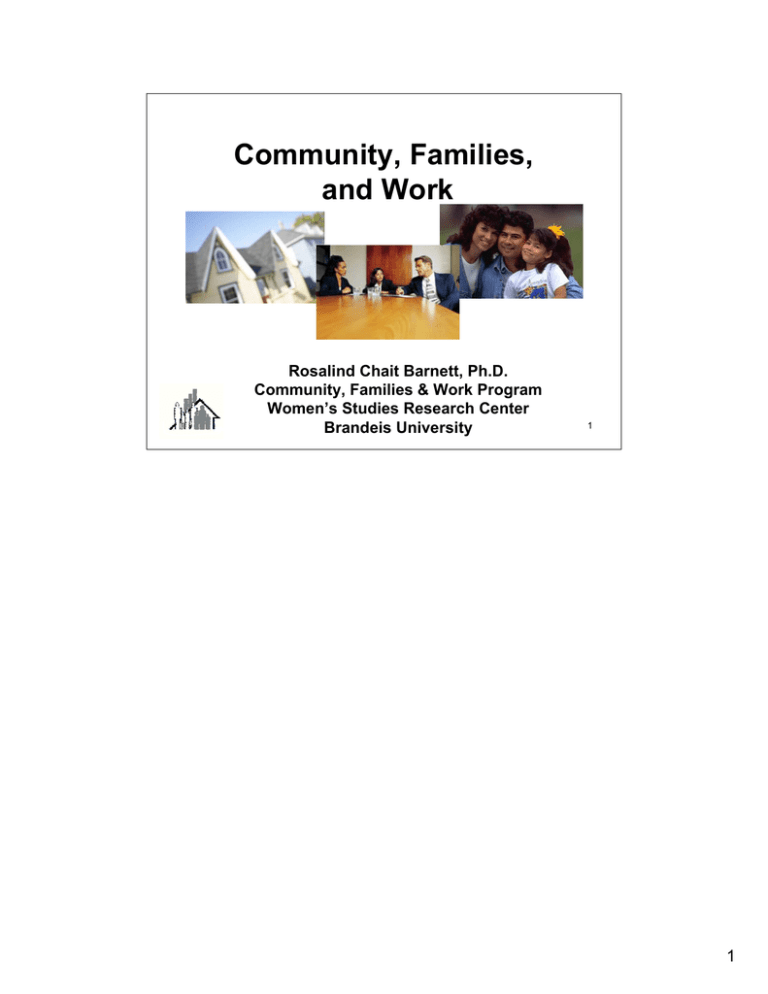
Community, Families, and Work Rosalind Chait Barnett, Ph.D. Community, Families & Work Program Women’s Studies Research Center Brandeis University 1 1 New Concepts, New Measures, and New Data 2 Today, I am going to introduce you to some new concepts, new measures, and new data. I hope they will further our discussion of the special challenges of employed parents with children who have emotional disabilities. 2 Community Well-Being Work Family 3 All three components are necessary to fully understand how working families manage their multiple demands. 3 Community Well-Being Work Family 4 4 After-school Gap The gap between the time the school day ends at 2:00 or 3:00 p.m. and the time most full-time employed parents get home from work at 6:00 or 7:00 p.m. amounts to 15 to 25 hours each week. 5 5 Parental concerns about after-school time (PCAST) is the degree to which employed parents are concerned about the welfare of their children during the after-school hours. 6 6 Results Job Disruptions Organizational Commitment Parental Concerns about After-School Time Job Satisfaction Personal Well-Being Attitudes about Career Advancement 7 High levels of PCAST are associated with: Increased levels of job disruptions. Decreased job satisfaction, which in turn predicts lower organizational commitment and poorer personal well-being. Less positive attitudes about career advancement, specifically: Decreased satisfaction with promotion opportunities in the organization. Decreased belief that one can compete successfully in the organization. 7 PCAST Affects all Employees PCAST affects parents regardless of race/ethnicity. Employees at all levels of the organization are vulnerable to PCAST. The level of PCAST among fathers and mothers is very similar. Parents who have concerns about their schoolage child report significantly higher PCAST. 8 8 Community Well-Being Work Family 9 9 Work Schedule Fit 1. The way your work schedules fit with your child(ren)’s schedule(s). 2. The flexibility available at your workplace to handle emergencies. 3. The flexibility available at your workplace to attend to family needs. 4. Your ability to work at home if necessary. 5. Your ability to bring child(ren) to work if necessary. 10 10 Relationships between Fit and JRQ, PRQ, and MRQ Predictors Work Schedule Fit Work Hours R2 Job-Role Quality Parent-Role Quality Marital-Role Quality B B B 0.23 *** 0.18 *** 0.23 * -0.01 0.00 0.01 .21 .26 .25 N = 141. ** p < .01. *** p < .001. Barnett, Gareis & Brennan, 1999. 11 11 Community Well-Being Work Family 12 12 Usable Flexibility The perception that you can use flexibility policies without any career penalties 13 13 CARE Caregiving concerns refer to the degree of worry caregivers experience in relation to the adults/elders for whom they have responsibility. 14 14 Community USABLE FLEXIBILITY CAREGIVING CONCERNS DETRIMENTAL JOB CHANGE HEALTH PROMOTING 15 BEHAVIOR 15 Implications 1. Community resources can have beneficial effects on parents’ well-being when those resources meet parents’ needs. For example, better provision of after-school programs for emotionally disabled children would undoubtedly reduce parental distress. 2. Employers should ensure that workers have usable flexibility. Just having flexibility options on the books is not sufficient. 3. Managers need to be trained so that they understand the beneficial effects on employees and on the organization of usable flexibility. 16 16 Subjective Factors • Work schedule fit • Job demands • Job control • Job social support Work Schedule • Hours • Distribution Psychological Distress Workplace Context • Drug/substance policies • Health coverage Substance Use/Abuse • Tobacco • Alcohol • Illicit drugs Substance Abuse Treatment Workplace Flexibility Policies 17 17


